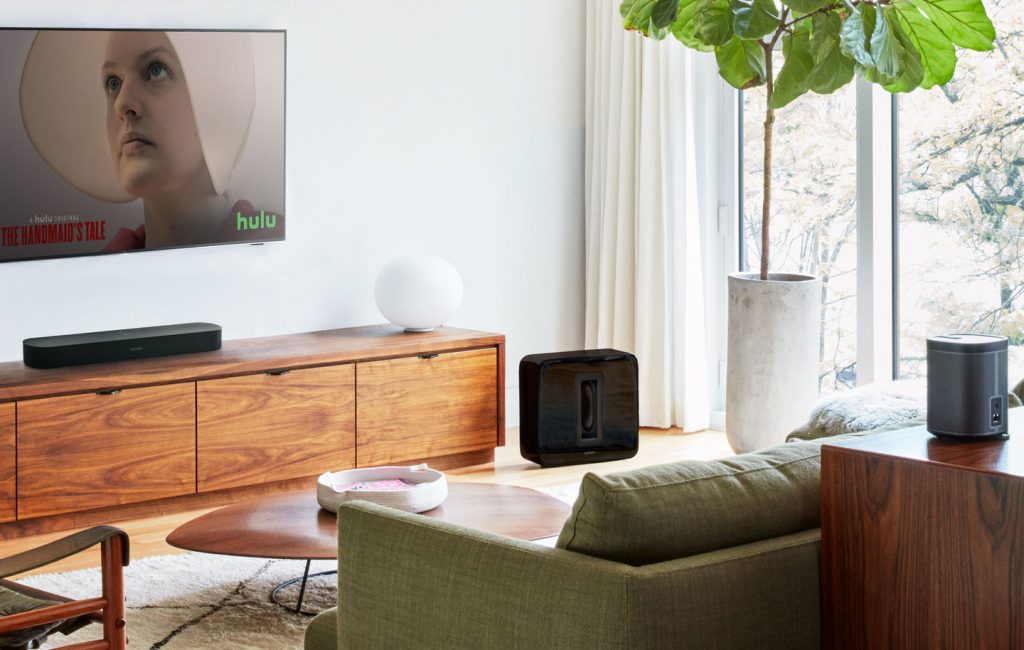
#SONOS APP SWITCH TO TV BLUETOOTH#
The Ray does not support Bluetooth (nor does it need to) but it does come with Apple AirPlay 2 support on board. If you want to listen to music instead, just bring up the Sonos app on your phone or tablet and choose your music selection from there.
#SONOS APP SWITCH TO TV TV#
The Ray's intelligent auto-switching function detects when your TV or projector is on, and automatically switches to that input. The Ray can also work with your current TV or cable box remote so you can control the volume without reaching for another remote or having to load the app on your phone. You won't need a separate hub or bridge device as the Ray connects to other Sonos speakers via WiFi. You can route your music to the Ray alone or to any or all of the other Sonos speakers within your home. Just select your music source within the Sonos app and select which speakers you want to play that music.

This means you can easily play music on the Ray from virtually any music streaming platform (e.g., Spotify, Amazon Music, Pandora) or from your own local digital music library.
#SONOS APP SWITCH TO TV FOR ANDROID#
The Sonos Ray has touch controls on board the unit but it can also be controlled within the Sonos app for Android or Apple. The Sonos Ray includes touch controls for music playback and volume adjustment. For TVs without fiberoptic outputs, you may need a fiberoptic switch connected from your your cable box and/or streaming set-top box to the Ray in order to get sound from video sources. So check your TV for compatibility before purchasing a Ray. Some recent televisions have omitted this type of audio output, favoring HDMI ARC instead. Similar to the original PlayBar and PlayBase, the Ray connects to any TV or projector via a single optical cable. You can also get an optional wall-mount, for a more discrete look with wall-mounted TVs or projector screens. For details on how that works, check out our Sonos 5.1 surround guide. The Ray is designed to enhance the sound of your TV or home projector while also integrating into the Sonos whole home multi-room music platform.Īs with other Sonos soundbars, the Ray can be upgraded into a true surround sound system by adding a pair of rear speakers or a powered subwoofer. The Ray joins the Beam Gen 2 ($449) and ARC ($899) as the company's new entry-level sound bar offering. Tap the Sonos speaker you'd like to add to the room and follow the remaining screen setup instructions 6.Sonos, a leader in whole home sound systems, has unveiled a new offering in their home theater speaker lineup: the Sonos Ray soundbar ($279). When your Sonos speakers are found tap "Continue" 5.

A screen will pop up that says "Finding Devices" 4. Select MENU, then Harmony Setup > Add/Edit Devices & Activities > Devices. Tap "Add New Device" in the bottom menu bar on the homescreen 2. Launch the Harmony app and connect to your Harmony Hub.

If the Playbar 'room' is not already the highlighted room, tap the Playbar room to highlight it. If you want music and audio content to appear on your Brilliant Control, use the Sonos app to add content to your “My Sonos” account (learn more here) Using a Brilliant Control: 1. Tap Rooms button on the tab bar to bring up Rooms screen. Tap the Sonos speaker you’d like to add to the room and follow the onscreen setup instructions 8. When your Sonos speakers are found tap "Continue" 7. A screen will pop up that says "Finding Devices" 6. Tap the Settings icon in the top right corner of the homescreen 2. You can also connect Sonos speakers with Brilliant after setup using the Brilliant mobile app or a Brilliant Control. Follow the prompts to connect your Sonos speakers with Brilliant. When you set up a Brilliant Control for the first time, you will be asked if you would like to add Sonos speakers during setup process.

Before you begin, make sure your Sonos sound system is 1) set up and ready to use with the Sonos app and 2) connected to the same 2.4GHz WiFi network as your Brilliant Controls.


 0 kommentar(er)
0 kommentar(er)
